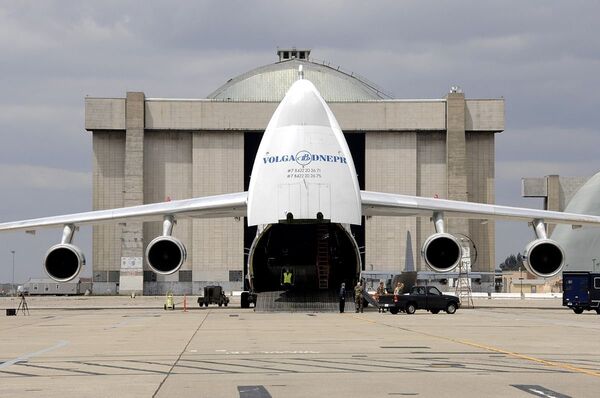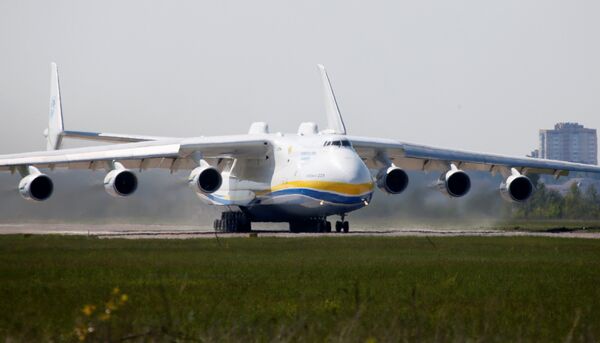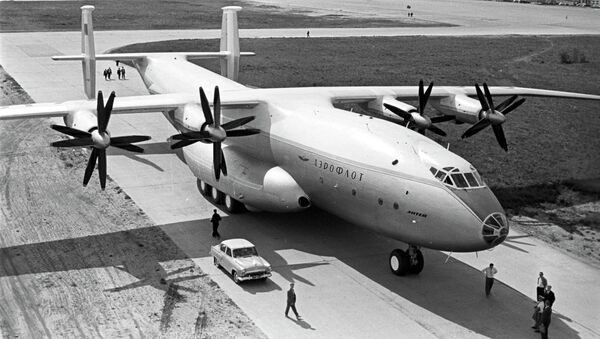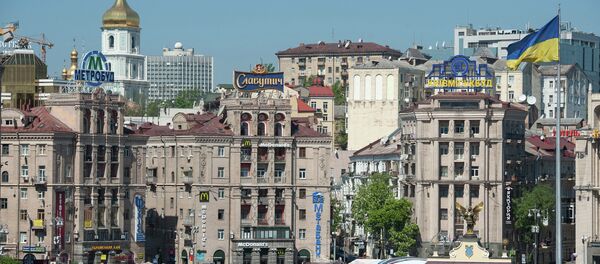This year, the company, which only recently boasted plans to expand on the global aviation market, will not complete even a single aircraft. Andrei Khaustov, the deputy head of the department of perspective developments at the company, admitted as much late last week. The cause of the crisis, the official added, is that the company's stock of available Russian components has completely dried up.
The total halt in production is a massive blow to the aviation giant, which until recently had remained one of only a handful of companies in the world capable of implementing the full cycle of aircraft production – from design to production to comprehensive after-sales support. In its history, which began in 1946, Antonov has developed more than 100 types and modifications of civilian, cargo, military, and specialized aircraft, building over 22,000 planes.
Even last year, the company's production figures were dismal, Antonov building only two aircraft – an An-148 regional jet airliner and a stretched fuselage version of the plane, known as the An-158. The company now has ten An-148 and An-158 aircraft on the production floor at various stages of readiness, their completion impossible until the company finds replacements for the estimated 5,400 components previously supplied by Russian companies.

Nonetheless, the company remains defiant, vowing to eliminate Russian components not only from new planes, but even from many existing aircraft, including the seven heavy transport An-124s operated by Ukraine's Antonov Airlines. The planes are set to have their Russian avionics, brake systems and tires swapped for Ukrainian and Western systems.
After the rift in relations between Kiev and Moscow following the 2014 Maidan putsch, the former Soviet giant, already limping along for most of the post-Soviet period, went into a tailspin. Antonov was forced to break off its joint venture with Russia's United Aircraft Corporation (OAK) by authorities in Kiev, and to terminate the joint Ukrainian-Russian project to build the An-70 military transport plane. After that, Antonov halted its supply of components to Russia's Samara International Aviation Corporation, where the An-140 turboprop airliner used by the Russian Defense Ministry was assembled.

Moscow, waiting patiently for almost two years as Antonov cut one form of cooperation after another, finally resolved to respond this summer. The production of the An-148 regional jetliner, outsourced by Antonov and built at Russia's Voronezh Aircraft Production Association, was stopped.
According to Russian business magazine Expert, OAK, the umbrella company which owns the Voronezh plant, made a conscious decision to continue to continue the production of the An-148 for a long time, despite the fact that the plane is a direct competitor to the Sukhoi Superjet family of regional airliners.
Now, Expert warned, "Antonov's management has chosen an unconventional and very dangerous path to ensuring its survival, through the trade of its scientific and technical potential, created in Soviet times, and by attempts to blackmail Russian operators of the An-124 Ruslan strategic airlift aircraft," forcing the latter to shell out cash to receive certification extending the service life of the planes.
Late last month, the company signed a deal with China's Aerospace Industry Corporation to sell the An-225's design characteristics, and to assist China with the serial production of the aircraft. The Chinese company expected to first build a second An-225, and then to organize mass production.

While company officials from Antonov have preferred to talk about some form of joint production and a joint intellectual property agreement, the reality, according to Expert, is far more grim. China, the magazine noted, does not need the An-225 for commercial exploitation, with the Ruslan already sufficiently powerful to close this niche.
"And since the Mriya's production will be organized in China, that country's industry would receive all the necessary expertise and technology to create their own heavy transport aircraft in the future." In this scenario, Expert noted, "it's hardly worth it for Ukraine to expect any serious dividends" from its deal with the Chinese.
"At best, the Chinese valuation of Antonov's intellectual property amounts to several tens of millions of dollars; at worst, Ukraine won't get anything. About 20 years ago, Antonov already attempted a similar joint project with Airbus for the production of the An-7X (a prototype of the An-70). But having received all the necessary design drawings, the Europeans decided to build their own freighter aircraft – the A-400M, which has already entered service in a number of EU countries."
The Ukrainian company's efforts to squeeze money out of Russian operators of the An-124 aren't likely to pan out either. The company has effectively stopped the certification process to extend the life of Ruslans operated by Russia's Volga-Dnepr airline and by the Russian Defense Ministry.
"But they clearly miscalculated," the magazine emphasized. The Russian Defense Ministry has already begun efforts to ensure that its 20 An-124 aircraft will be inspected by OAK subsidiary Ilyushin. Volga-Dnepr has not been so fortunate, and Ukraine has already promised to try to ban their flights abroad.
"Legally speaking, that's extremely difficult to do. Antonov is well aware of this…The maximum they can do is to absolve themselves of responsibility for the technical condition of the aircraft, and to notify aviation administrations of other countries about it. But if Ilyushin is assigned with the obligation to provide technical support for all An-124s in Russian jurisdiction, such a notification by the Ukrainian firm will lose any meaning."







